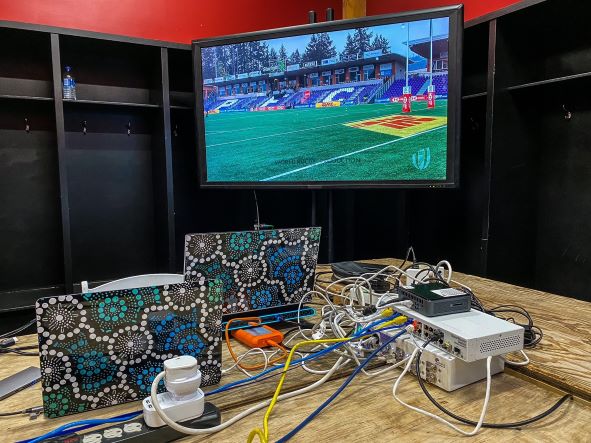Building the toolbox
What pieces of equipment make up an analyst's toolbox?
Below is a list of the key technical attributes that the analyst will need to become proficient in:
- Filming and capturing
- IT hardware use
- IT analysis and data handling software use
- Hard drive storage
- Sharing tool use
- Presentation tool use.
Filming and capture
During training, analysts will need to be proficient in filming sessions. We will learn more about the practices of filming in the next section. It may be required for an analyst to capture (record) the training sessions and/or match footage straight onto a laptop for immediate analysis. For this to happen, analysts will need the correct capturing equipment that enables the digital encoding of the camera footage into the analysis software. Further detail on this will be provided in the next section.
IT hardware use
Having the basic IT hardware knowledge is a must for any potential analyst. With so many devices and hardware options available, the job of the analyst is to select the appropriate device for the task given.

IT analysis software use
There are many analysis software options on the market. Choosing which one to use comes down to a number of factors; skill of the analyst, the objectives of the role, budget, size of the organisation.
The software used should not define the analyst and the role, instead the analyst must use the software to shape what is required of the job.
IT data software use
Being able to organise and understand data is a key component to any analyst job. Analysts should be comfortable using data software such as Excel or Numbers. As analysts deal with more data, it may be necessary to use more complex data analysis systems such as BI tools and data programming systems.
Hard-drive storage
Analysts are required to store large amounts of video and numerical data. They need to choose devices that allow easy access to data through a well planned folder structure.
Sharing tools & Cloud storage use
How an analyst shares information is important to consider. The organisation should decide how much video and data storage can be done online. When sharing large video and data files it can be easier to design a cloud storage platform that players and coaches can gain access to. Careful planning needs to be made as to how much it will be used as these systems can become costly.
Presentation tool use
Not only does an analyst need to work out what and how to share video and data, they also play a part in why it is being shared, and ensuring the key messages being communicated and understood and taken on board as learnings. Using presentation and telestration tools can help identify key messages, making them easy to identify and understand. The right presentation tools can create clarity and make the messages stick in a player’s memory.